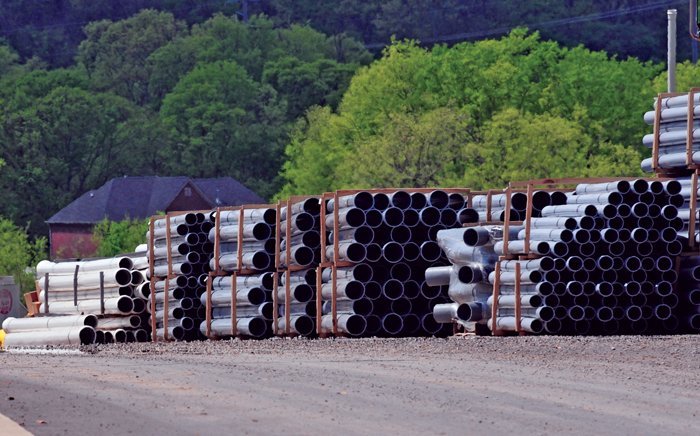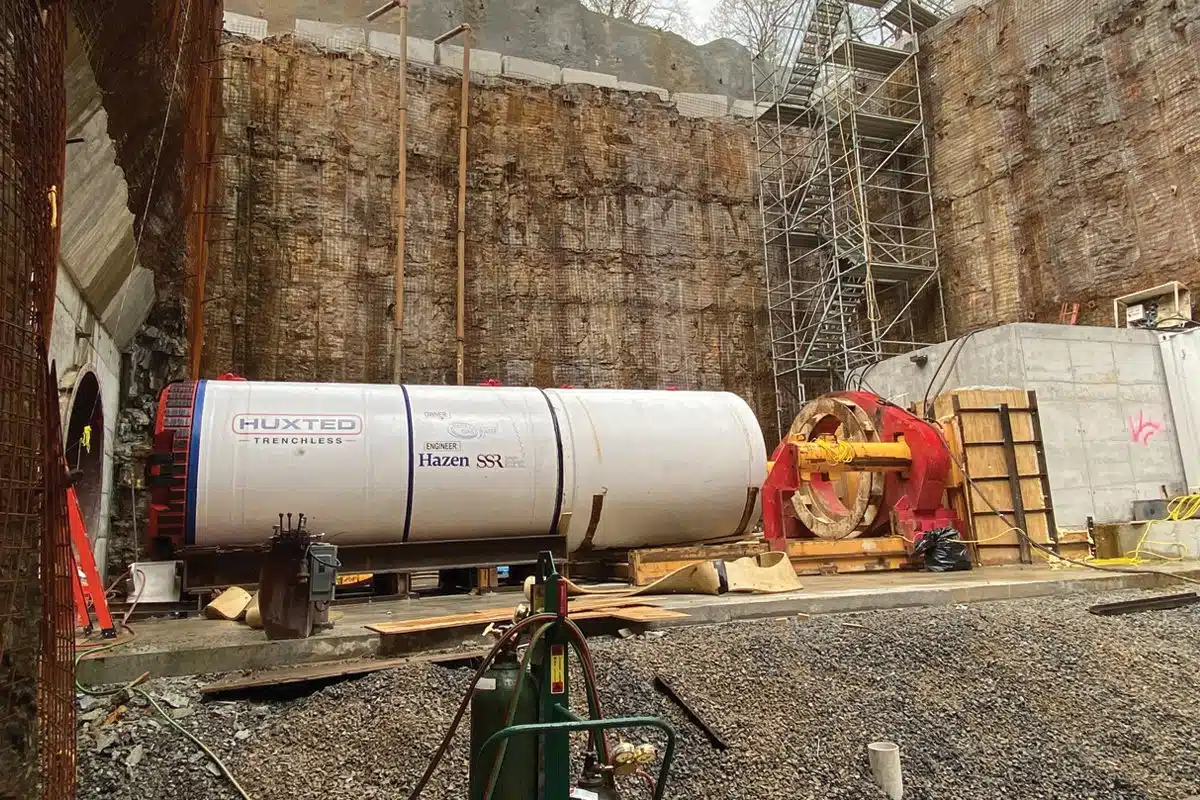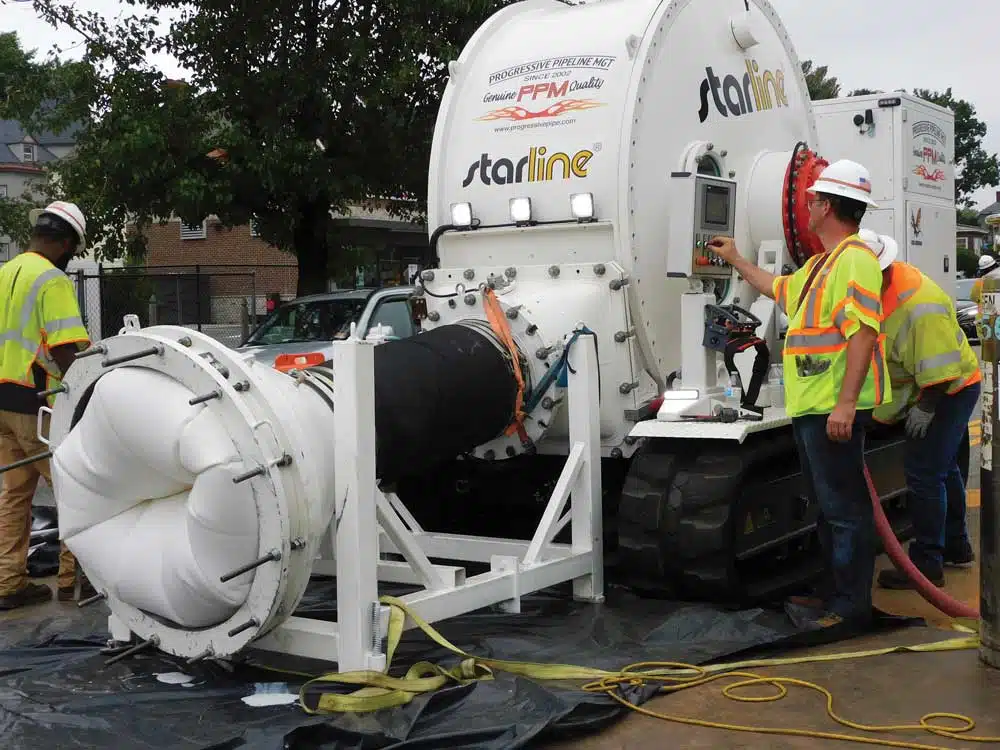
The 2015 Pipe Selection Survey
January 12, 2015
In the nearly five years since Trenchless Technology last conducted its sewer pipe selection survey, not much has changed in the world of pipe materials.Like in 2010, and our surveys before that, systems are largely made up of PVC, clay, concrete, ductile iron, HDPE, asbestos cement and cast iron. Some systems still include the wood, Orangeburg and stone pipes, as well. It’s also not new information that many of the sewer systems need work with the majority of respondents giving their systems a fair rating.
 One thing that did become clear is that, as the trenchless industry has grown, relining methods have gained favor unless the pipe is completely deteriorated and then open-cut replacements are favored.
One thing that did become clear is that, as the trenchless industry has grown, relining methods have gained favor unless the pipe is completely deteriorated and then open-cut replacements are favored.“In the Saskatoon region, we haven’t seen any significant change in the pipe materials being used for trenchless projects, but the obvious answer is the broadening application of fusible PVC pipe throughout North America,” says Dan Willems, P.Eng., special projects manager for the City of Saskatoon.
William Suchodolski, P.E., engineering manager for the Ocean County Utilities Authority in New Jersey, concurred that fusible PVC (ASTM C900) is one of the most significant changes in the last five years and added that so is the competition in the use of centrifugally cast fiber reinforced polymer pipe.
In our non-scientific poll of municipal sewer system operators and consulting engineers, 88 percent said they specify pipe materials for their projects, which prompted an obvious follow-up question: what type of pipe do you specify?
At 83 percent, PVC received the most votes followed by HDPE at 63 percent, Ductile Iron at 50 percent and Concrete at 30 percent. Editor’s Note: Since many systems are comprised of mixed materials, respondents were allowed to select more than one answer, which accounts for the totals greater than 100 percent.
 Remaining specified pipe types were Fiberglass at 22 percent, steel at 9 percent, cast iron at 2 percent and other at 13 percent. In the Other category for this question responses included; selection based on need, two calls for cured-in-place pipe, one steel casing, one concrete pressure pipe and one copper.
Remaining specified pipe types were Fiberglass at 22 percent, steel at 9 percent, cast iron at 2 percent and other at 13 percent. In the Other category for this question responses included; selection based on need, two calls for cured-in-place pipe, one steel casing, one concrete pressure pipe and one copper.In Saskatoon, Willems said that when specifying pipe, the City most commonly chooses PVC, reinforced concrete or polyethylene pipe.
“These have traditionally been used as they’ve been the most cost competitive materials, depending on size range, in the region,” he said. “Alternative pipe materials are reviewed on a case-by-case basis depending on the type of project. For example, we are using HOBAS pipe (fiberglass reinforced pipe) on a current design-build tunneling job with a 48-in. sanitary sewer and a 96-in. storm sewer.”
In New Jersey, when looking at a full replacement, the pipe specification comes down to two factors; the diameter of the pipe and whether it is a force or gravity main. Suchodolski said for force mains ,PVC is considered first followed by Ductile Iron Pipe and for gravity they look at reinforced concrete and then other materials.
 Of note, and speaking to the growth of the relining industry, when we asked what kind of pipe materials are being used, 22 percent of our respondents commented that they use CIPP when considering trenchless for work on their pipeline systems. Though this is not a pipe material, but rather a method, we inquired as to why this is the favored approach.
Of note, and speaking to the growth of the relining industry, when we asked what kind of pipe materials are being used, 22 percent of our respondents commented that they use CIPP when considering trenchless for work on their pipeline systems. Though this is not a pipe material, but rather a method, we inquired as to why this is the favored approach.Suchodolski explained why his organization favors CIPP or sliplining.
“Depending on the diameter, layout and location (surface features), CIPP may require removal of the top cone section as an insertion point and a good source of water, otherwise CIPP is an excellent candidate for most applications followed by slip lining,” he said. “If the diameter is 36-in. diameter or larger and there are straight runs between adjacent manhole runs, sliplining is a potential excellent candidate for rehabilitation. Cost of insertion pits and locations of pits are a main concern.”
Willems concurred, noting that in many instances when a full-replacement is needed, open-cut still wins out.
 “The primary reason, particularly in colder climates where pipes are installed deeper to get under the frost zone, is to minimize surfaces disturbance, which minimizes the costs to reinstate surface infrastructure that may be impacted by the work, including roadways, curb, gutter, sidewalk and landscaping,” he said. “These methods are also typically significantly quicker to complete than open-cut methods, thus reducing the impact to our customers, the residents and businesses affected by the construction; this is increasingly becoming more important as the public is provided easier ways to communicate with local government.”
“The primary reason, particularly in colder climates where pipes are installed deeper to get under the frost zone, is to minimize surfaces disturbance, which minimizes the costs to reinstate surface infrastructure that may be impacted by the work, including roadways, curb, gutter, sidewalk and landscaping,” he said. “These methods are also typically significantly quicker to complete than open-cut methods, thus reducing the impact to our customers, the residents and businesses affected by the construction; this is increasingly becoming more important as the public is provided easier ways to communicate with local government.”Dino Ng, of the New York City Department of Design and Construction, offered a different reply, noting that, in many cases, CIPP wins out because there is more completion in the market and less proprietary issues compared to full pipe products. He added that the preferred method, based on an engineer’s assessment, is to rehab existing sewers where possible.
 “Clay pipe is the gold standard for smaller diameter sewers,” Ng said, when referring to New York City’s systems. “Larger sizes generally are RCP (reinforced concrete). In certain circumstances DIP (ductile iron) are used.” These, he noted, are long-standing city standards due to the excellent performance history for the three varieties.
“Clay pipe is the gold standard for smaller diameter sewers,” Ng said, when referring to New York City’s systems. “Larger sizes generally are RCP (reinforced concrete). In certain circumstances DIP (ductile iron) are used.” These, he noted, are long-standing city standards due to the excellent performance history for the three varieties.When it comes to using those materials, the city tends to rely on open-cut methods when existing pipes collapse or are severely deteriorated and upsizing is required. Why not go trenchless for some of these projects?
“Some of the trenchless methods are not yet proven viable in the city environment, such as pipe bursting,” Ng said. “Other methods tend to be proprietary, which make their use difficult under a public environment. In some cases, cost or risk of a newer technology may not be able to justify their use.”
How do other systems relate? How does your system compare? Results of the 2015 Pipe Selection Survey. are available, at www.trenchlesstechnology.com or via the Trenchless Technology iPad app.
Mike Kezdi is an assistant editor for Trenchless Technology.




